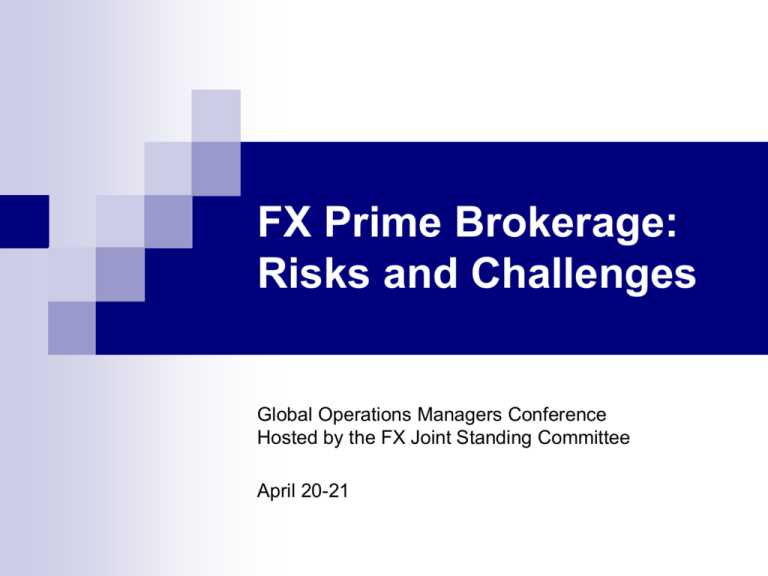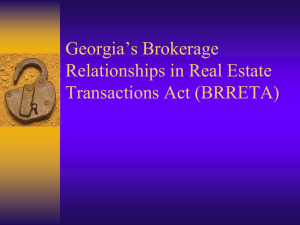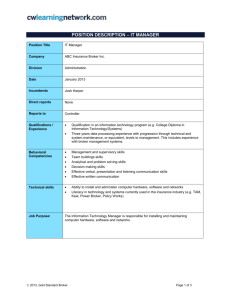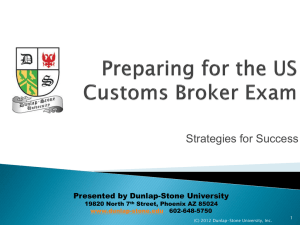FX Prime Brokerage Model
advertisement

FX Prime Brokerage: Risks and Challenges Global Operations Managers Conference Hosted by the FX Joint Standing Committee April 20-21 Growth of FX Prime Brokerage Overview: Foreign exchange prime brokerage (FXPB) came to the forefront in the late 1990’s but had limited traction. Over the last 3 to 4 years, the Industry has seen explosive growth in this business fueled by increased interest in FX as an asset class and the soaring number of new hedge funds. Entering the FXPB space may be a valuable way for banks to leverage existing infrastructure and investment. Primary clients: Hedge funds Commodity trading advisors (CTA’s) Traditional asset managers & regional banks How it works: Clients trade with an executing brokers, who then "give-up" their trades to the FXPB for trade processing. The FXPB acts as a central counterparty to the clients’ transactions: Holding any collateral required for trading Extending credit lines Becoming the central back office for the client 2 FX Prime Brokerage Model Client Execution + PB instructions Executing broker Trades with a number of bank counterparties Client may outsource operational functions Service Provider Manages the operational support for the client PB confirms block trade with Broker Trade given up to PB Prime Broker Operations confirms allocations with Client and/or middle office provider FX Prime Broker 3 Value Proposition Client Access to multi-dealer pricing and liquidity Realize operational efficiencies, STP and reduction in capital expenditures Collateral requirements aggregated with the FXPB Trade allocation, confirmation and settlement consolidated with FXPB Consolidate and customize reporting through the FXPB. Primary documentation required only with the FXPB FXPB Generate new fee-based revenue stream Develop new and strengthen existing client relationships Leverage technology and operating infrastructure Executing Broker Increase execution flows by transacting business with less credit worthy counterparties by implementing Give-Up Agreements Efficient operational flows as the parties to the trade are dealers However, a complex web of relationships is created which has prompted review by the Industry 4 Risks & Challenges for the Prime Broker Risk Challenge Credit Risk Liquidity Risk FXPB shares credit lines with the Firm’s Franchise Business Operational Risk Market Risk Managing basis risk introduced by a client putting on option and NDF positions and taking off these positions with different executing brokers (pass through / non pass through) Resolving disputes between the client and executing broker Reputational Risk Creating a “Chinese wall” to segregate a Firm’s Franchise and FXPB business (client confidentiality) Identifying off market trades Managing exposure to highly leveraged clients (hedge funds) Establishing appropriate credit terms (VaR vs Initial Margin) Real time monitoring of liquidity within the terms of the Give-Up Agreement Lack of standardized Give-Up Agreements Monitoring of post execution events (exercises, barriers..) Clients outsourcing operations Notification of the “give-up” trade is primarily manual (Reuters & e-mail) Identifying incoming trades as Franchise or FXPB related 5 Risks & challenges for the Executing Broker Risk Challenge Credit Risk Monitoring credit limits within the parameters of the Give-Up Agreement Lack of standardization in Give-Up Agreements Trade rejection by the FXPB Operational Risk Notification of the “give up” trade to the FXPB is manual (Reuters and email) Market Risk Delays in the client notifying the FXPB of a trade exposes the executing broker to extended market risk. Reliance on the FXPB to properly match trades and highlight discrepancies Trade rejection by the FXPB Reputational Risk Failure to “give-up” trades in timely fashion Requirement of the U.S. Patriot Act to Know Your Client (KYC) Electronic Communication Networks (ECNs) eliminate the ability of the executing broker to identify the underlying account. Executing off market trades 6 Risks & Challenges for the Client Risk Challenge Confidentiality Reliance on PB to implement proper “Chinese walls” segregating the Risk clients portfolio from the PB’s franchise business Concentration Risk Clients put “all their eggs in one basket” If the credit worthiness of the PB deteriorates or the relationship terminates, the client may be faced with credit, liquidity and/or operational risks. Operational Risk Reconciliation of portfolio with FXPB Trade rejection by the FXPB Monitoring of post execution events (exercises, barriers..) Market Risk Failure to notify FXPB of trades in timely fashion Reliance on the FXPB to properly match trades and highlight discrepancies Managing basis risk introduced by putting on and taking off option, derivative and ndf positions with multiple brokers 7 Industry Initiatives Market participants, central banks and industry organizations have come together to address some of the broader systemic risks emerging in the FXPB business. Current Initiatives: The FXJSC Prime Brokerage/E-Commerce Sub Group is conducting an analysis of the development and risks associated with FXPB with the goal of making recommendations of guidelines to be included in the NIPS Code. The NY Fed FX Operations Managers Prime Brokerage Sub Group is reviewing the operational issues and risks associated with the FXPB business NY Foreign Exchange Committee (FXC) / Financial Markets Legal Group (FMLG): The FXC published a standard Give-Up Agreement The FMLG is undertaking a review, in consultation with the U.S. Department of Treasury, of the KYC responsibilities foreign exchange executing brokers have under the U.S. Patriot Act Participating dealers must continue to work together to create automated solutions for the notification process. Existing vendor solutions provided by Traiana and FXall but are still in the early stages. 8








